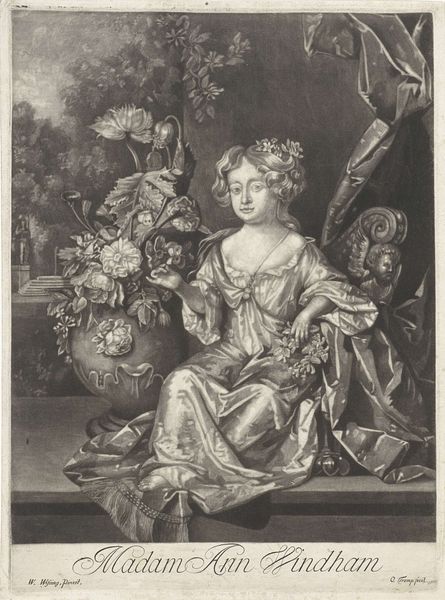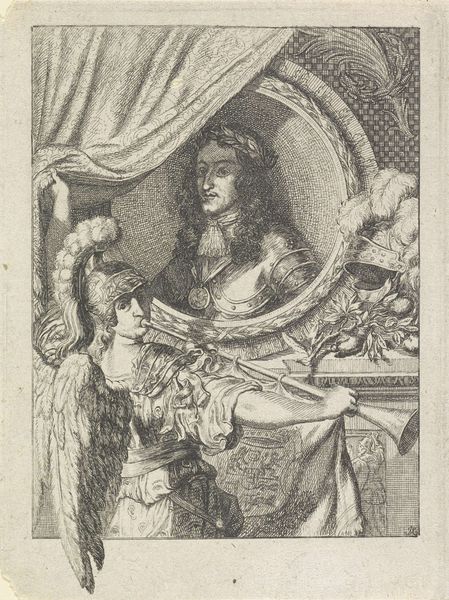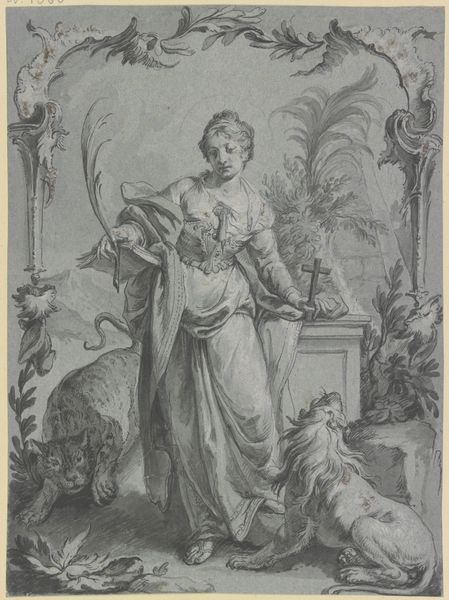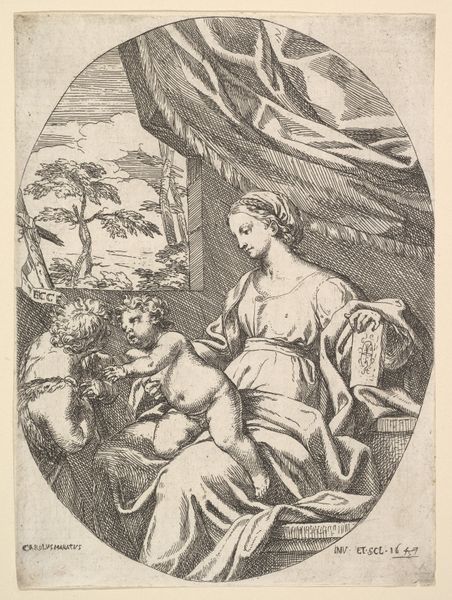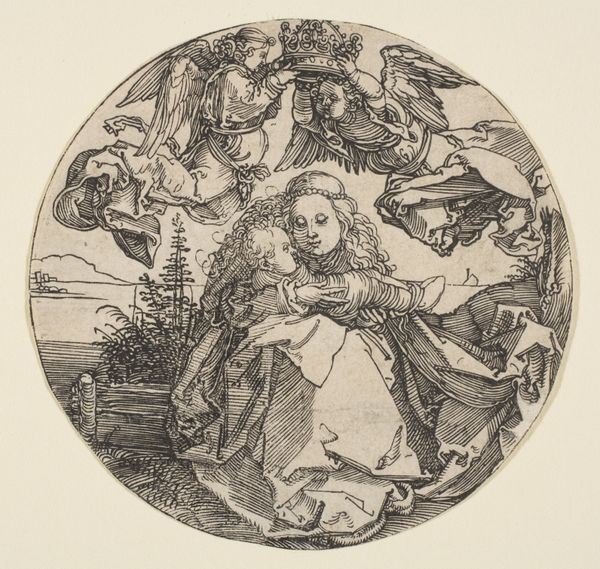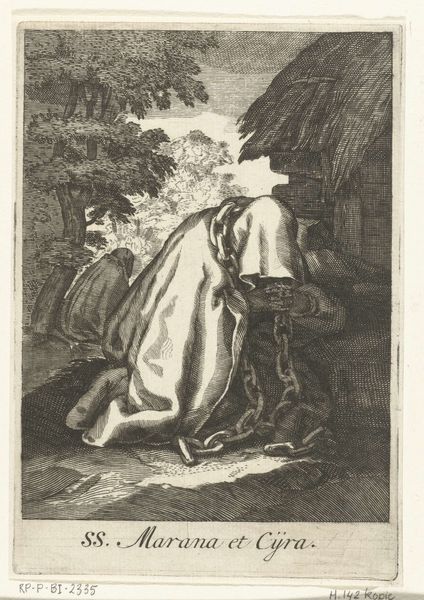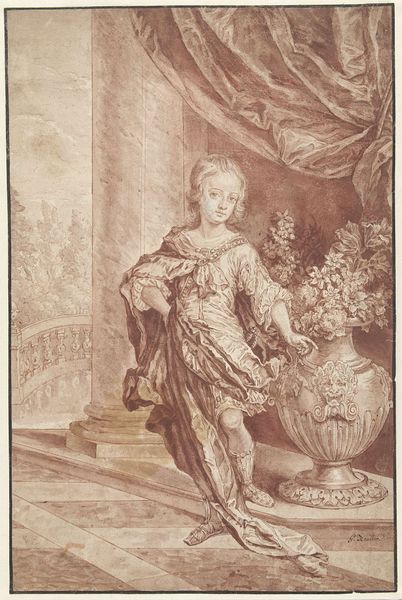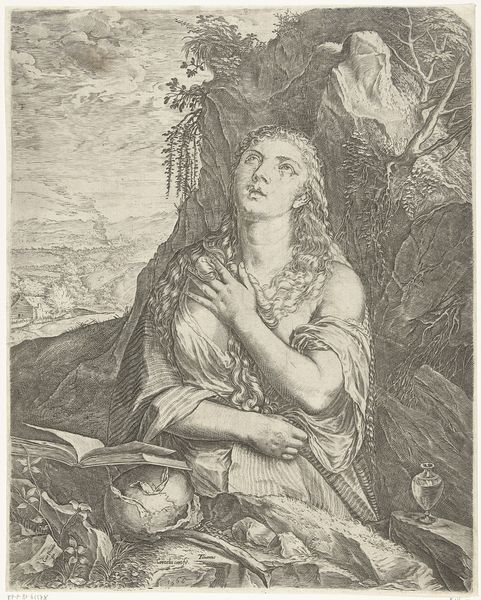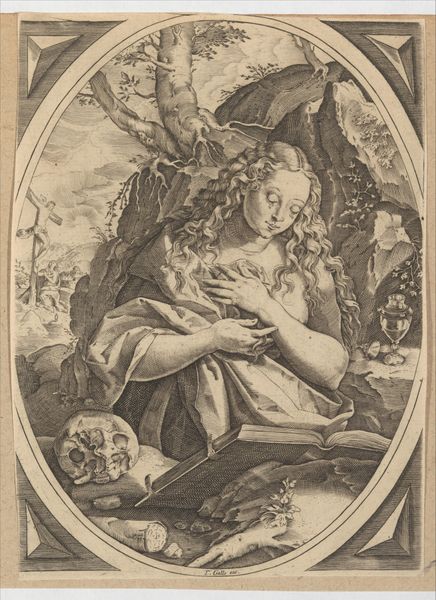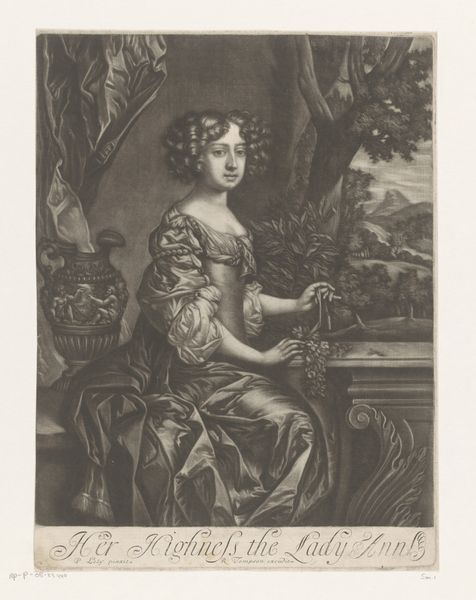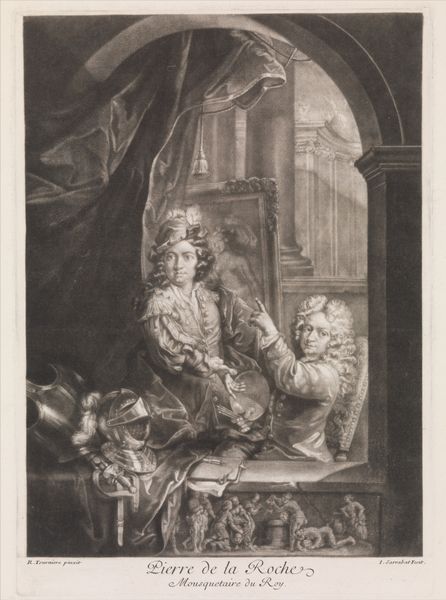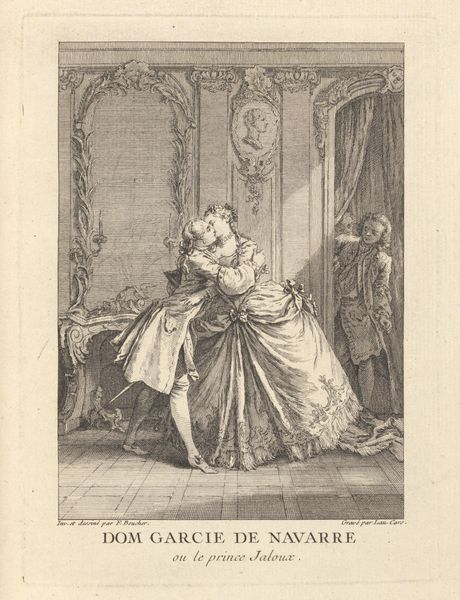
drawing, print, engraving
#
portrait
#
drawing
#
baroque
# print
#
figuration
#
engraving
Dimensions: sheet: 10 13/16 x 8 5/16 in. (27.4 x 21.1 cm)
Copyright: Public Domain
Curator: Welcome. Today, we’re examining Romeyn de Hooghe’s "Portrait of Mary Stuart," an engraving dating from between 1660 and 1708. Editor: It feels so constrained! The tightly-curled wig, the formal garden backdrop… even the abundance of flowers seem almost like a cage, rendered entirely in monochrome lines. Curator: The print, made using an engraving technique, offers a glimpse into Baroque sensibilities. It presents Mary Stuart, not merely as a person, but as a symbol laden with dynastic aspirations, a claim to the throne and perhaps much more! The garden symbolizes control, the taming of nature itself, just as a monarch tames their domain. Editor: But is it *her* choice? Her gaze, despite the formality, feels almost… melancholy? As if she's burdened by the very symbols meant to empower her. Those sleeves, like puffy clouds threatening a storm! Is she embodying power, or drowning in it? Curator: Consider how prints functioned then: multiples disseminated broadly. De Hooghe masterfully used figuration to convey her status, embedding heraldic motifs. It reinforces a preordained narrative, a carefully constructed persona for public consumption. The garden ornaments further reinforce classical allusions, which ties the lineage to grand European ambitions. Editor: It makes me wonder about the real woman versus the icon she was forced to become. Was her own identity deliberately cultivated or, rather, suppressed? She is positioned on a kind of ornate platform or pedestal – and, in essence, we are separated from her. Curator: The detail, though precise, leaves a sense of cool detachment, don’t you think? De Hooghe’s choices, and the conventions of Baroque portraiture, reveal much about the performance of power, and about the artist’s vision of status during this era. Editor: Definitely a sense of performance – power presented almost as theatre. It really brings to life the complexities and inner struggles buried within official portraits. Thank you for sharing this interpretation of Mary Stuart!
Comments
No comments
Be the first to comment and join the conversation on the ultimate creative platform.
